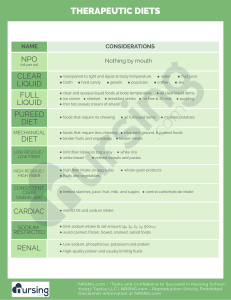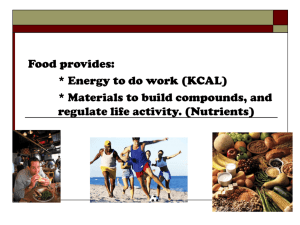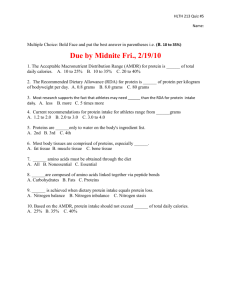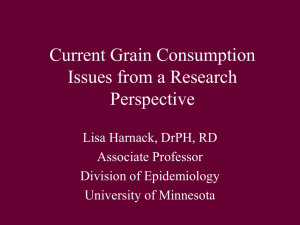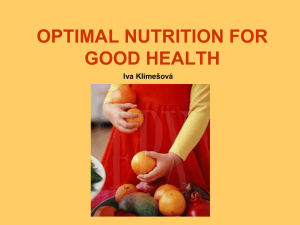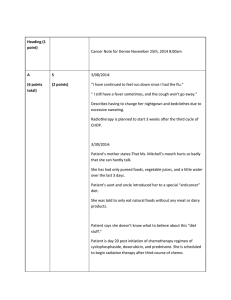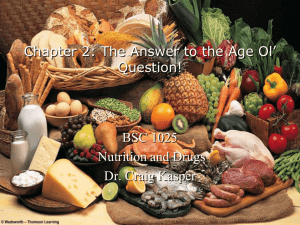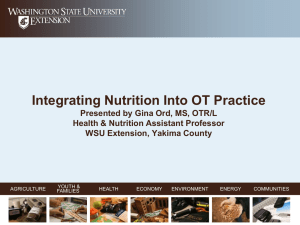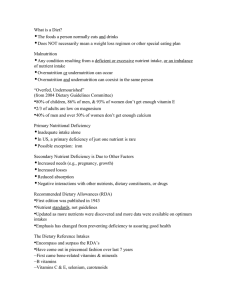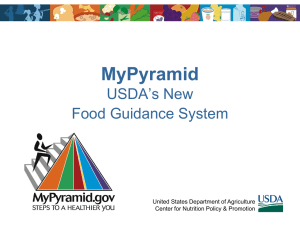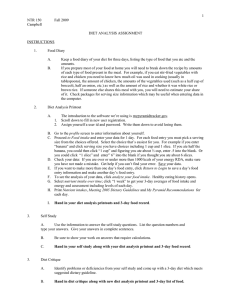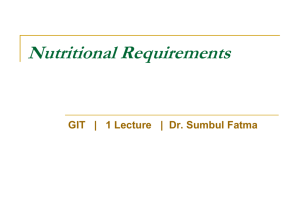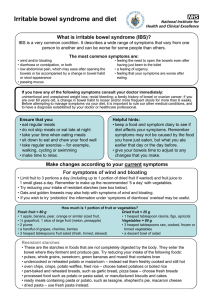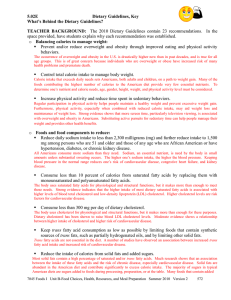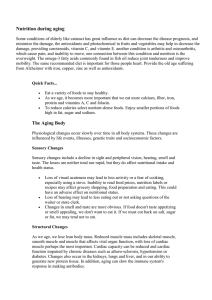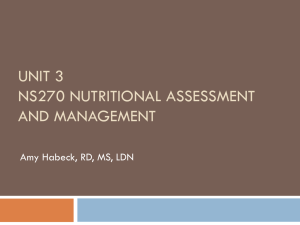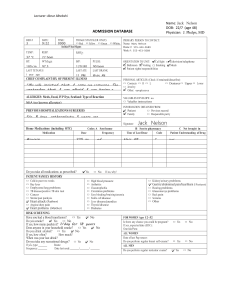Food Choices: Social Life and Trends
advertisement
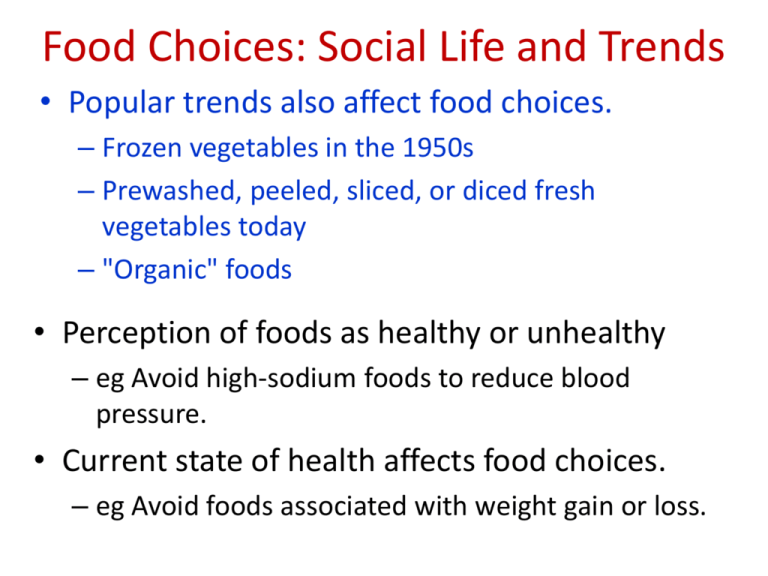
Food Choices: Social Life and Trends • Popular trends also affect food choices. – Frozen vegetables in the 1950s – Prewashed, peeled, sliced, or diced fresh vegetables today – "Organic" foods • Perception of foods as healthy or unhealthy – eg Avoid high-sodium foods to reduce blood pressure. • Current state of health affects food choices. – eg Avoid foods associated with weight gain or loss. Food Choices: Advertising • Highly Influential, especially on children – Manufacturers spend $10 to $15 billion annually – The most advertising dollars are spent on breakfast cereals, candy, gum, and soft drinks. – Advertising for fruits and vegetables is rare. BHT = butyl hydroxytoluene Kilocalorie (kcal) or Calorie 1 kilocalorie (uppercase "C") = 1,000 calories (lowercase "c"). How Do We Assess Nutritional Status? • A person's state of nutrition is defined as: – Healthy – Malnourished – Undernourished – Overnourished Dietary Reference Intakes (DRIs) Encompass Several Reference Values The 5 Ref Values: • Estimated Average Requirement (EAR) • Recommended Dietary Allowance (RDA) Higher than the EAR • Adequate Intake (AI) * • Tolerable Upper Intake Level (UL) • Acceptable Macronutrient Distribution Range (AMDR)** • The RDA or AI (not both), the AMDR, and the UL are used to assess the quality of meals. *Food and Nutrition Board (FNB) decides this. **Carbs: 45 to 65% daily kcals Fats: 20 to 35% daily kcals Pro-s: 10 to 35% daily kcals Quality of the American Diet Needs Improvement Excess intake • Added sugar – 16 percent of daily total kcal intake • Sodium • Saturated fat Too little intake • Fiber • Vitamins (vitamin D) • Minerals (major and trace) – Most men meet vitamins and minerals req. – Women tend to be low in iron. Poor dietary practices may be due to where Americans eat. Most eat in the car, buy prepared meals, or eat in front of the TV or computer. Rates of Overweight and Obesity in Americans Are Too High • More than 35 percent of adults are obese. • Leads to higher rates of: – Type 2 diabetes – Heart disease – Cancer – Stroke Scientific Method: Used to gather and test information to make sound conclusions. 1. Observation – notice something & ask a question 2. Hypothesis – propose answer to that question 3. Design Experiment – to test hypothesis 4. Analyze Data - gather and assess results 5. Conclusions – make logical comments What is Sample Size, n or N? What is a Placebo What is a Blind Study What is a Double Blind Study Controlled Scientific Experiments Task: Design an experiment using the Scientific Method to test how foods affect blood glucose 1. Observation – What you eat affects your blood glucose 2. Hypothesis – 3. Design Experiment – 4. Analyze Data – 5. Conclusions –

